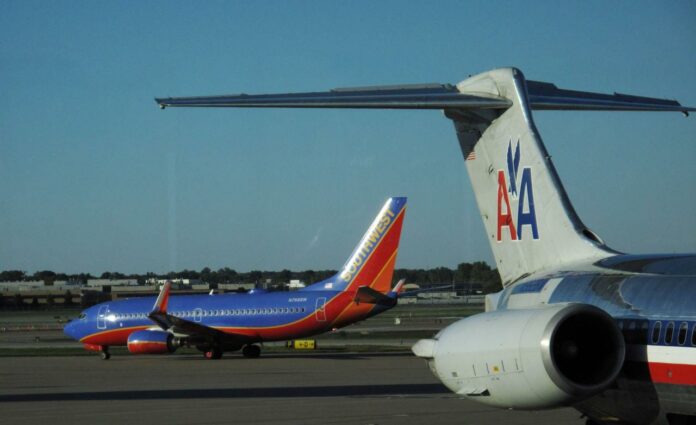Air travel snarls that accompanied the end of the pandemic were largely the fault of airlines, according to a new Government Accountability Office report.
The GAO report examined flight delays and cancellations up to April 2022.
“Our analysis found that flight cancellations increased in the second half of 2021 and the first 4 months of 2022, outpacing cancellation rates in both 2018 and 2019 despite fewer flights overall,” the report said.
“[F]actors within the airlines’ control (e.g., aircraft maintenance or lack of crew) were the leading cause of cancellations from October through December 2021 as well as in April 2022 and airline-caused delays increased for nearly all airlines in the last half of 2021,” according to the GAO report.
The report said that in 2018 and 2019, weather-related issues had been the top cause of cancellations.
Airline Passenger Protections: Observations on Flight Delays and Cancellations, and DOT’s Efforts to Address Them https://t.co/l6Ol76sFC9
— U.S. GAO (@USGAO) April 28, 2023
The report also added that in a single three-month period from October 2021 to December 2021, airline-controlled factors led to at least 60 percent of canceled flights.
The report noted that cancellation rates in late 2021 were higher than the pre-pandemic years of 2018 and 2019 even though scheduled flights went down by about 14 percent. Delays remained at roughly the same levels, the report said.
However, the report made sure to note that the causes of delays has changed recently.
In 2018 and 2019, it said, “late-arriving aircraft were generally the leading cause of flight delays, shifting to airline-caused delays when the pandemic began in March 2020.3 Airlines continued to be the leading cause of delays throughout 2021, as air traffic returned to near pre- pandemic levels.”
The report said that when it checked Alaska Airlines, Allegiant Air, American Airlines, Delta, Frontier, Hawaiian Airlines, JetBlue, Southwest, Spirit Air and United, all showed an increase in airline-caused cancellations from the final half of 2019 to the final half of 2021.
The share of canceled flights varied. At the high end, more than 90 percent of Hawaiian Airlines’ cancellations were attributed to factors the airlines could control. At the low end, about 40 percent of United’s cancellations were attributed to issues the airline could control.
The report said that in response to the findings, airlines said that “operational challenges, including a need for additional pilots and crew, have made it harder for airlines to manage flight disruptions.”
The report did note that airlines have added staff, opened new training facilities and reduced flights as a way of reducing cancellations and delays.
A representative of the trade group Airlines for America said that in 2023, the weather and air traffic control system glitches should take the blame for cancellations, according to Fox Business.
“Carriers have taken responsibility for challenges within their control and continue working diligently to improve operational reliability as demand for air travel rapidly returns,” Hannah Walden said
“This includes launching aggressive, successful hiring campaigns for positions across the industry and reducing schedules in response to the FAA’s staffing shortages,” she said.
Walden noted that in one day alone, about 1,300 flights were canceled when the Federal Aviation Administration safety-alerting system was down.
This article appeared originally on The Western Journal.


